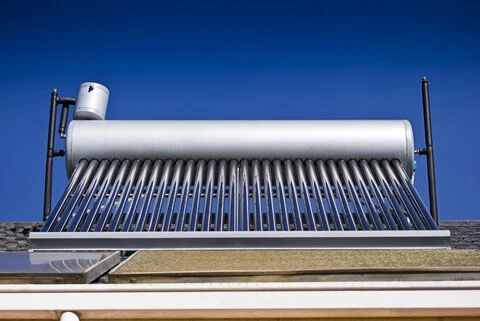Calibration and Performance

The Solar Energy industry relies on standardization for many things, including testing energy conversion, reflectance or materials properties, fabricating arrays, integrating into the smart grid, or assuring workplace safety.
ISO 9846:1993
Solar energy -- Calibration of a pyranometer using a pyrheliometer
Its use is mandatory for the calibration of secondary standard pyranometers according to ISO 9060, and is recommended for the calibration of pyranometers which are used as reference instruments in comparisons. Is intended for use by test institutions or test laboratories equipped with well-maintained pyrheliometers and is applicable to all pyranometers. The object is to promote the uniform application of reliable methods to calibrate pyranometers, since accurate calibration factors are the basis of accurate hemispherical solar radiation data which are needed for solar energy test applications or simulations.
ISO 9847:1992
Solar energy -- Calibration of field pyranometers by comparison to a reference pyranometer
Specifies two preferred methods: the outdoor calibration (with the pyranometer in a horizontal position, in a tilted position, or at normal incidence) and the indoor calibration (using an integrating sphere with shaded or unshaded lamp, or at normal incidence). Applicable to most types of field pyranometers regardless of the type of radiation receptor employed.
ISO 9059:1990
Solar energy -- Calibration of field pyrheliometers by comparison to a reference pyrheliometer
This International Standard describes the calibration of field pyrheliometers using reference pyrheliometers and sets out the calibration procedures and the calibration hierarchy for the transfer of the calibration. This International Standard is mainly intended for use by calibration services and test laboratories to enable a uniform quality of accurate calibration factors to be achieved.
ISO 9845-1:1992
Solar energy -- Reference solar spectral irradiance at the ground at different receiving conditions -- Part 1: Direct normal and hemispherical solar irradiance for air mass 1,5
Provides an appropriate standard spectral irradiance distribution to be used in determining relative performance of solar thermal, photovoltaic, and other system components and materials where the direct and hemispherical irradiance component is desired. The tables presented define an air mass 1,5 solar spectral irradiance for the direct normal radiation - 5,8 field-of-view angle - and hemispherical radiation on an equator-facing, 37 tilted plane for an albedo of 0,2. These tables are intended to represent ideal clear sky conditions.





